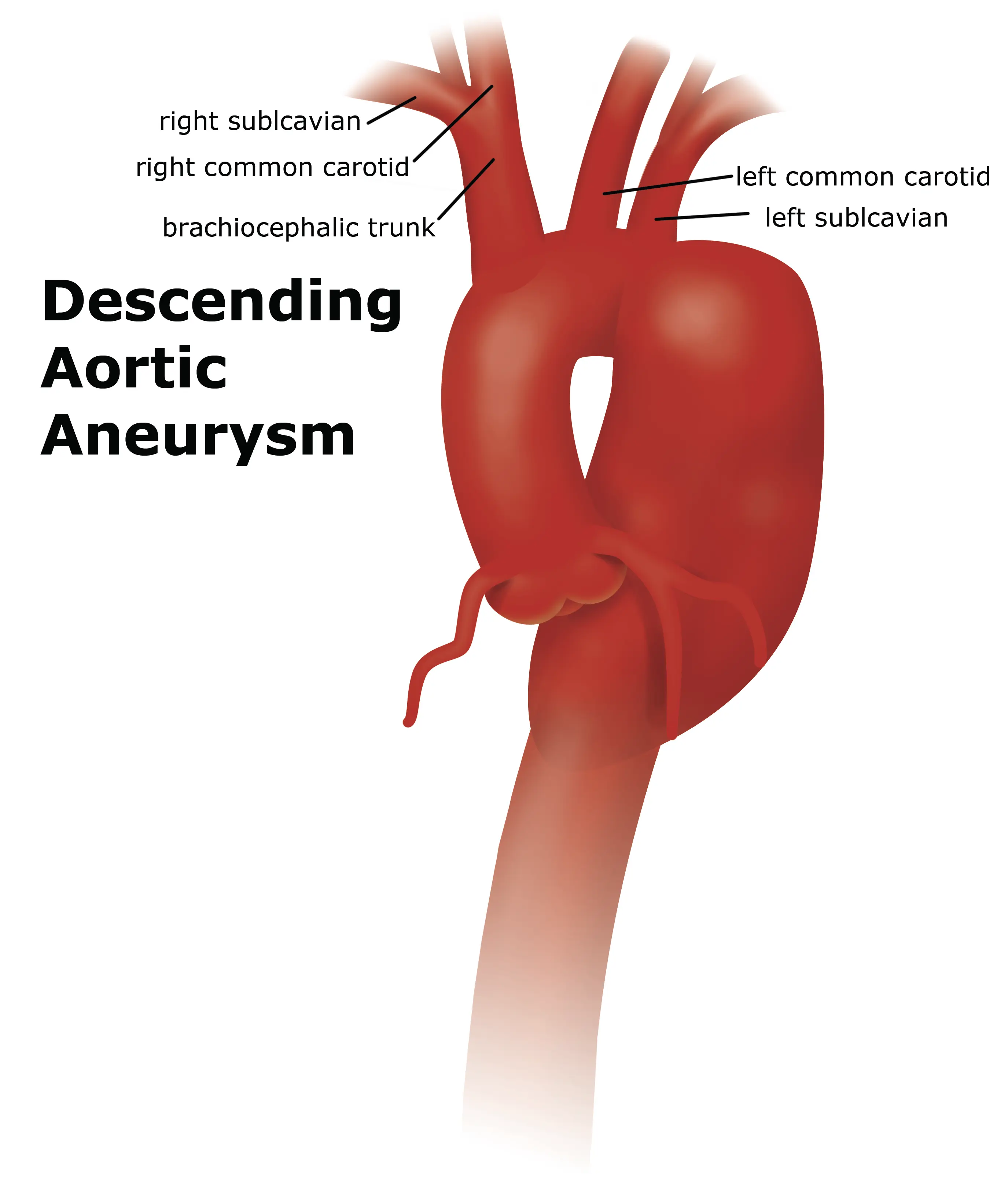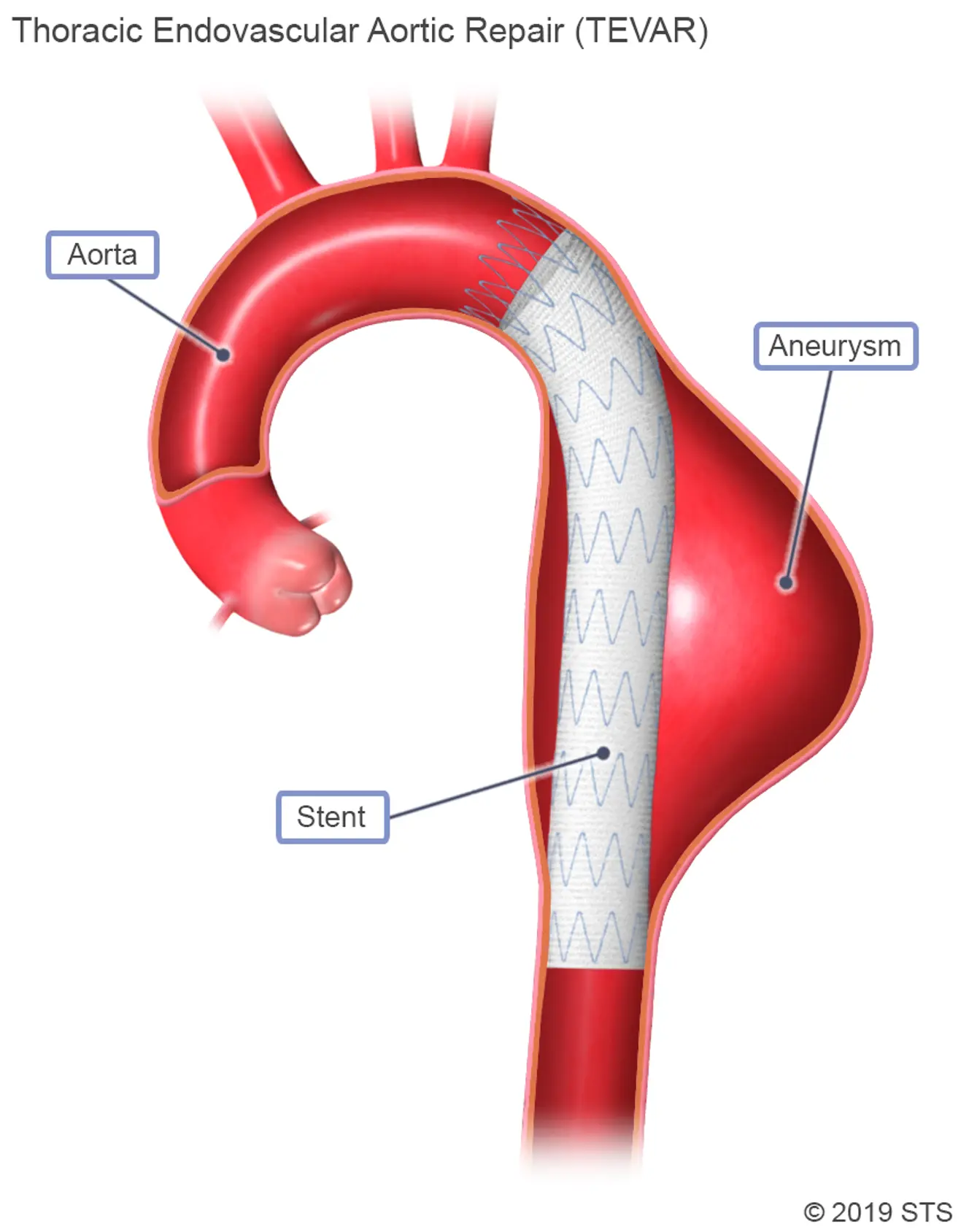Can Aortic Aneurysm be Cured?
Sometimes
Treatment depends on the size and risk of rupture; small aneurysms may not require intervention, while larger ones may need surgery

What is Aortic Aneurysm?
An aortic aneurysm is a bulge or enlargement in the aorta, the largest blood vessel in the body. It can be asymptomatic or lead to severe complications, including rupture. Treatment depends on the size and location and may involve monitoring, medications, or surgical intervention.

Clinical Aspects

Characteristics
Enlargement of the aorta, the large blood vessel that carries blood from the heart to the rest of the body

Symptoms
Often asymptomatic; may cause chest or back pain, difficulty breathing

Diagnosis
Imaging studies, angiography, sometimes monitoring for changes in size

Prognosis
Variable, depends on the size and location of the aneurysm

Complications
Rupture, bleeding, organ damage
Etiology and Treatment

Causes
Genetic factors, atherosclerosis, high blood pressure

Treatments
Monitoring, medications (blood pressure control), surgical repair for large aneurysms

Prevention
Monitoring, medications (blood pressure control), surgical repair for large aneurysms
Public Health and Patient Perspectives

Epidemiology
Common in older adults, often associated with atherosclerosis and hypertension

Patient Perspectives
Surveillance, lifestyle changes, and surgical intervention as needed
This information aims to provide a general understanding of the subject matter, but individual circumstances can vary significantly. Please remember to consult with healthcare professionals for personalized advice and guidance.
Share: